Key in a search term below to search our website.
Key in a search term below to search our website.
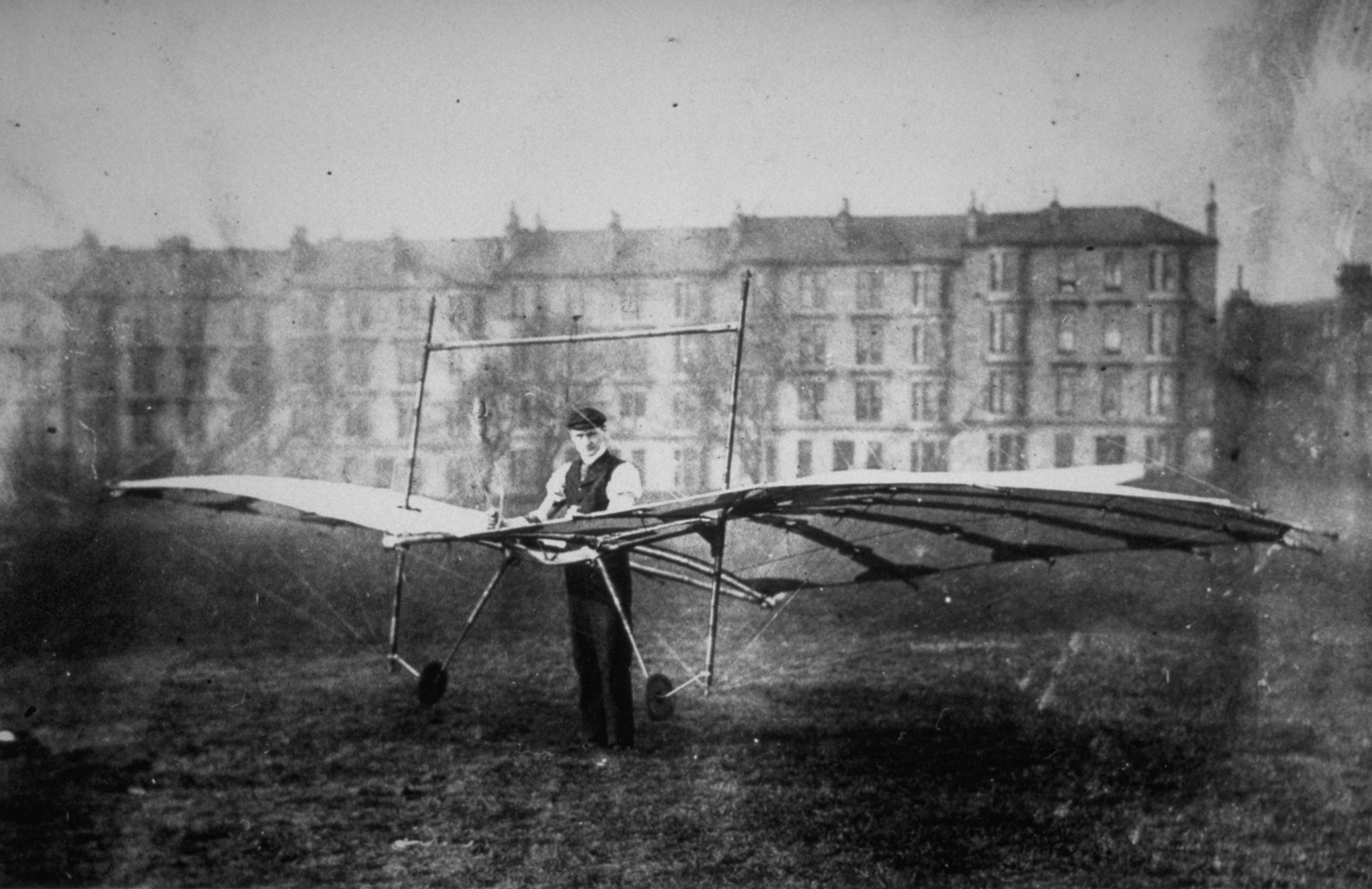
British aviation pioneer Percy Pilcher could have been the first person ever to fly. Helped by his sister Ella, Pilcher built four unpowered gliders and designed a triplane capable of powered flight. But why did his design never take off?
Date
1895-96
Made by
Percy Sinclair Pilcher and Ella Pilcher
Made from
Fabric, bamboo, wire
Made in
Glasgow
Dimensions
Wingspan 7.51m, length 5.64m
Weight
22.7kg
Museum reference
On display
Atrium, National Museum of Scotland
Did you know?
Pilcher's designs for a powered triplane were tested during a BBC Horizons documentary in 2003. With some modern safety modifications, the triplane flew!
By 1899, four years before the Wright brothers took to the skies, Percy Sinclair Pilcher (1867-1899) had broken the world distance record for heavier-than-air flight with this very glider, devised a powered flying machine and intended to demonstrate it to the world. But it was never to be: Pilcher was killed after crashing the Hawk in October 1899, his designs for powered flight never tested.
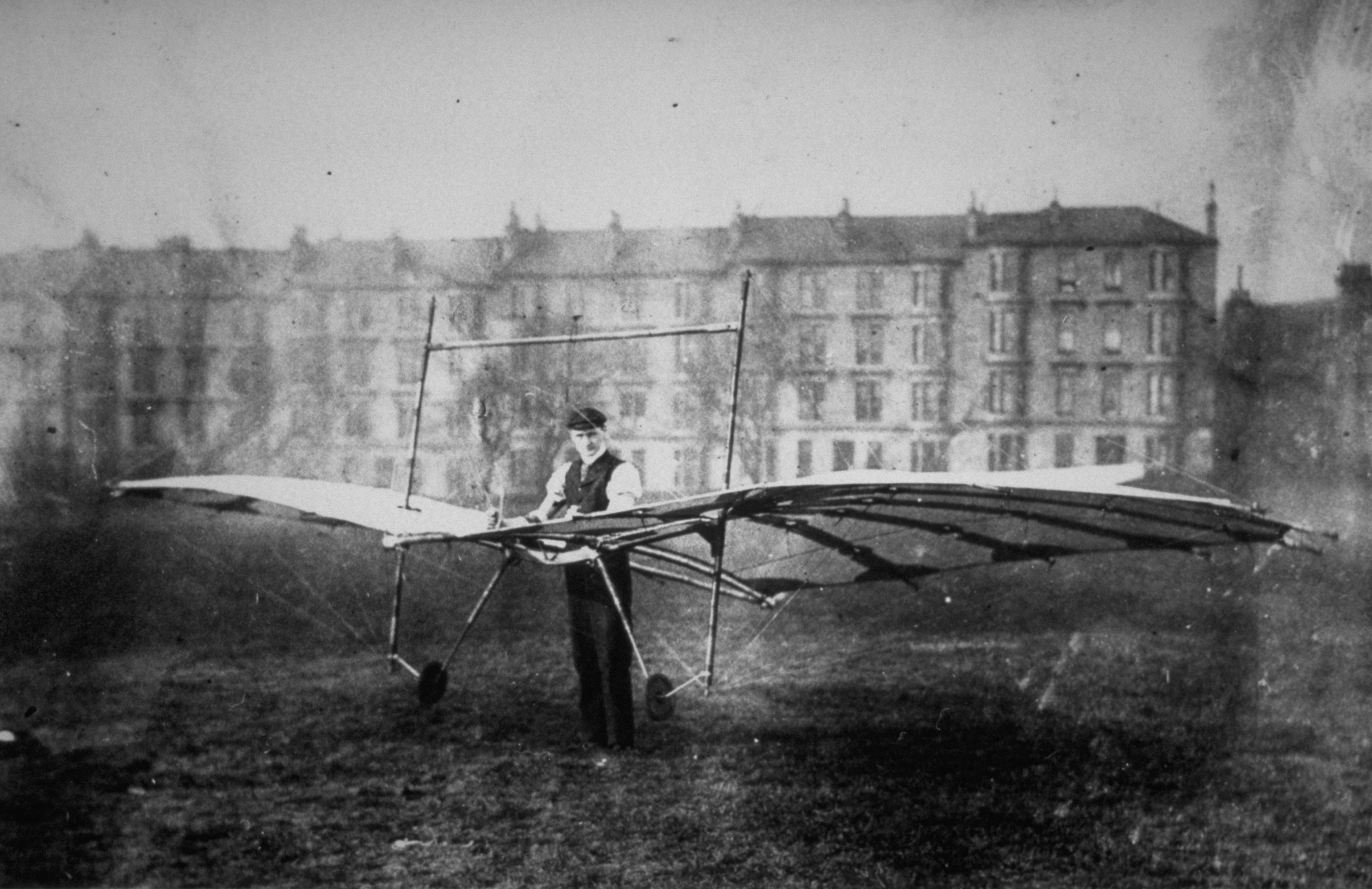
Above: Pilcher tests the Hawk at Kelvingrove Park in 1896
Technology had conquered land and sea by the Age of Steam but for early Victorian adventurers, the skies remained unreachable.
It was in this time of exploration and innovation that Percy Pilcher was born. After a childhood spent in England and Germany, and a period in the Royal Navy as a cadet, Pilcher moved to Glasgow in 1887 to serve an engineering apprenticeship with the shipbuilders Randolph, Elder & Co. of Govan. This was to be the start of his love affair with flight.
By 1890, Pilcher was taking classes at University College, London and publishing articles on the art of gliding. He returned to Glasgow a year later to lecture on naval architecture and engineering, although his main focus remained the pursuit of the skies. With his sister Ella, Pilcher would spend the next eight years making a detailed study of gliders and planes. During this time he corresponded with leading aviation pioneers of the day, including German hang-glider Otto Lilienthal. These exchanges inspired him to build four gliders – the Bat, the Beetle, the Gull and the Hawk.
While the Hawk is the most famous of Pilcher’s flying machines, it was not the first to soar. That honour belongs to the Bat, which Pilcher tested at Cardross near Helensburgh during 1895. With the Bat, he became the first person in the United Kingdom to make repeated flights in a contraption that was heavier than air.
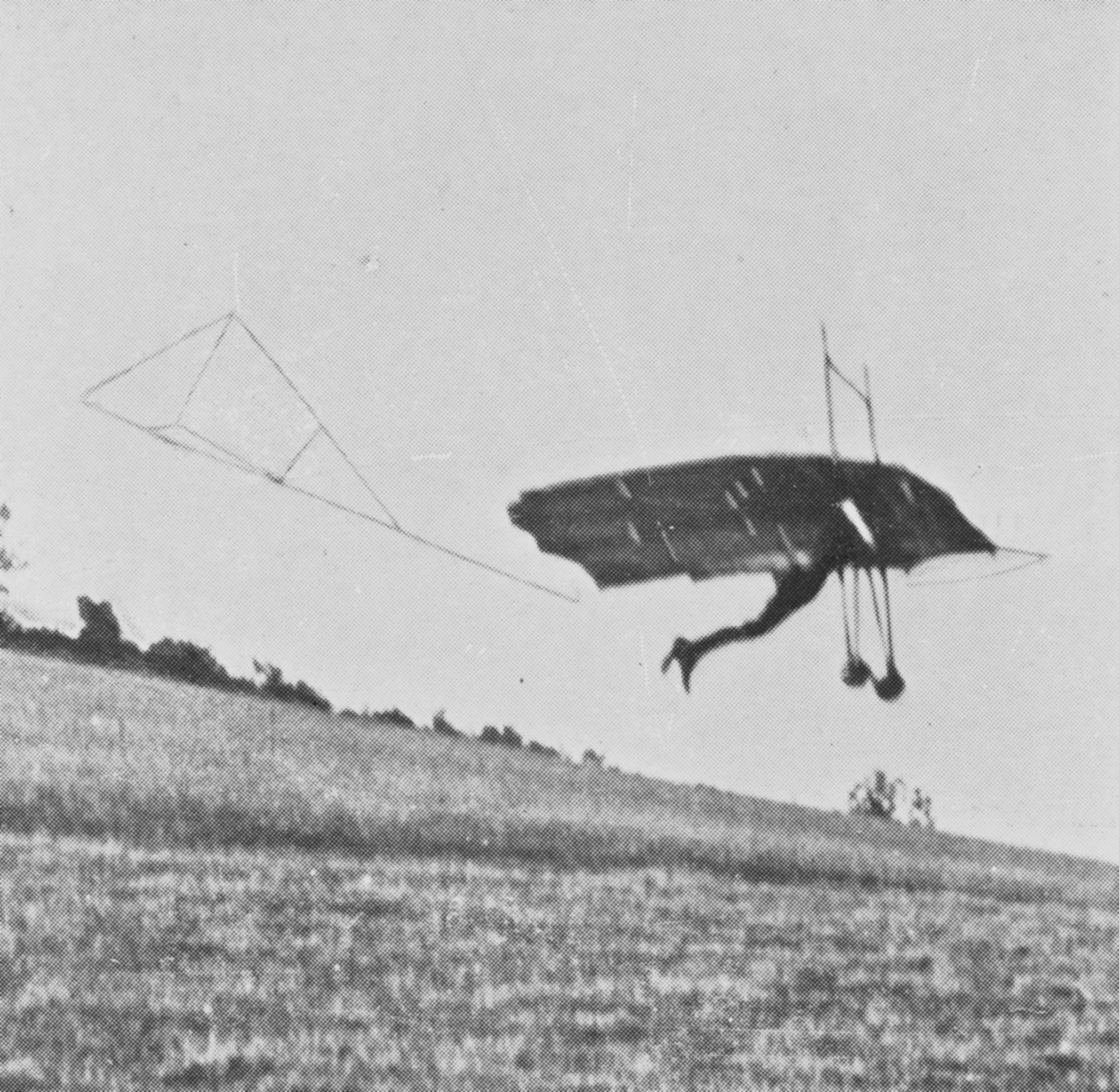
Above: The Hawk in flight at Eynsford, Kent
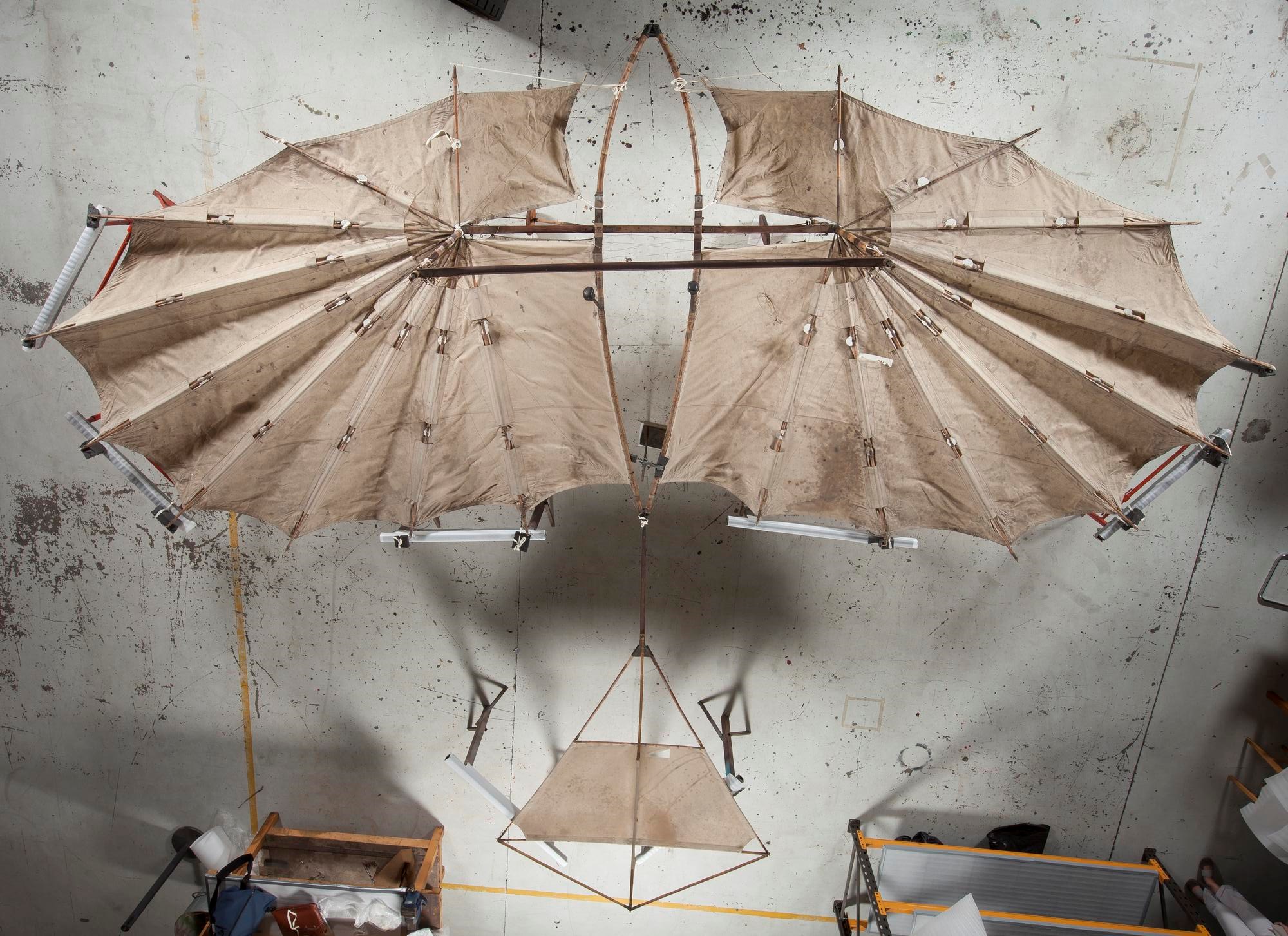
Watch this episode of Making the Museum to find out from our Principal Curator of Transport Louise Innes what makes the Hawk such an important part of aviation history.
During 1896-97, Pilcher and Ella were often to be seen in Glasgow’s dear green spaces testing what would become his most successful glider. The Hawk was equipped with the world's first sprung-wheeled undercarriage and helped Pilcher to break the world distance record in 1897. But on 30 September 1899, Pilcher crashed to the ground during what should have been a routine test flight on the glider. He never regained consciousness and died on 2 October 1899.
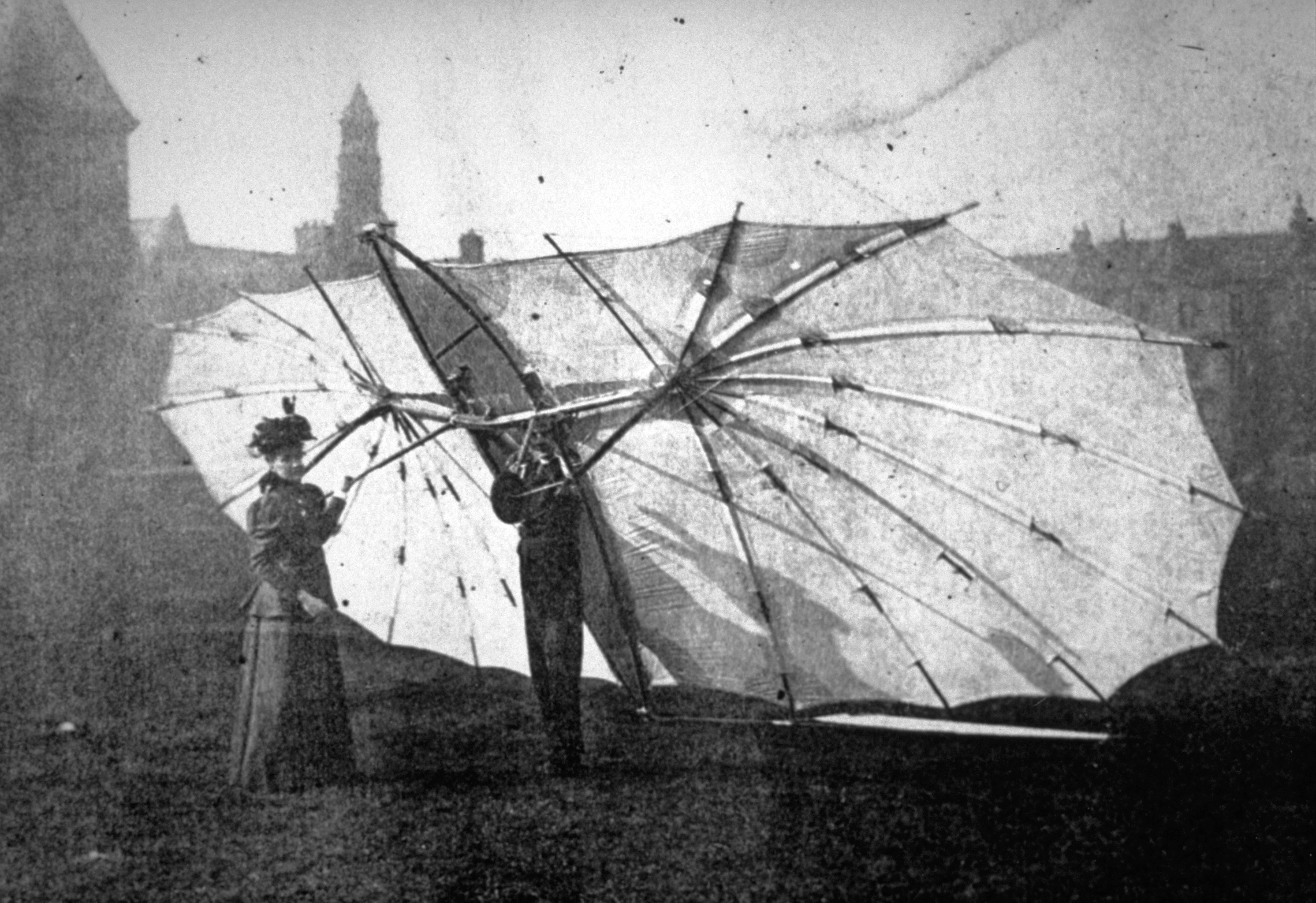
Above: Percy and Ella test the Hawk at Kelvingrove Park, Glasgow, 1896
The Hawk is perhaps both the most melancholy and most hopeful of all the objects in our Science and Technology galleries. Although it ultimately killed its creator, the monoplane glider stands testament to Pilcher's unerring belief that we would one day fly.